#Palacio de Sobrellano by Joan Martorell
Explore tagged Tumblr posts
Text





























The Day of Cantabria
The Day of Cantabria is an important holiday for the locals which is celebrated yearly on the second Sunday in August. This year it falls on August 13. This historic community is located in Northern Spain with a population of 580, 229. Its name comes from the Celtic word for ‘highlanders,’ referring to its mountainous terrain. Cantabria is home to many beautiful national parks and museums that display its rich and ancient history. Cantabria’s beautiful architecture is a mixture of arabesque, gothic, and renaissance, making it a great tourist destination for those who appreciate history. The locals celebrate this holiday to appreciate the rich history and culture of Cantabria.
History of The Day of Cantabria
Cantabria is an autonomous community in northern Spain. Though the borders of this region changed throughout the years and had long been occupied by neighboring countries, its people have been around for centuries. This region has archeological sites that go back to the Lower and Upper Paleolithic period. The Cave of Altamira is one of the most significant finds, with cave paintings that date back to about 37,000 B.C. Cantabria is part of Green Spain and enjoys luscious forests, breathtaking scenery, and marvelous architecture.
During the Roman conquest of Hispania, Rome fought against Cantabria and Asturias from 29 to 19 B.C., eventually conquering the regions. The Cantabrians saw death in every battle as a victory and preferred committing suicide rather than becoming slaves. Cantabria remained part of the Roman Empire until it fell in 476 A.D. when it regained independence. It was later invaded by Muslim Moors in 714. Cantabria attempted to unify during the 18th century but struggled due to a lack of resources.
The Day of Cantabria was first celebrated in 1967 as The Day of the Mountains. Its name was later changed to “The Day of Cantabria” in 1981 when Cantabria gained independence. In 1981, the Statute of Autonomy of Cantabria allowed it to become a self-governed, autonomous community, giving it its own flag, coat of arms, and anthem. Cantabrians proudly celebrate this day through sporting events, parades, festivals, and traditional dance and music. Cantabrians all overexpress their appreciation for their history and culture, sharing it with others.
The Day of Cantabria timeline
37,000 B.C.First Cantabrians
The first recorded human evidence in this region.
195 B.C.Cantabria
The first references to Cantabria were documented by historians.
29 to 19 B.C.Cantabria Wars
Rome fights against Cantabria and Asturias.
19 B.C.Occupation
The Romans take over Cantabria.
476 A.D.Fall of the Roman Empire
The Roman Empire collapses.
1967The Day of the Mountains
Cantabria begins celebrating this holiday to appreciate the history and culture of Cantabria
1981Independence
Cantabria became an independent, autonomous community. The name of the holiday was changed to Day of Cantabria.
The Day of Cantabria FAQs
What is the capital of Cantabria?
The capital of Cantabria is Santander.
What is Cantabria known for?
Cantabria is known for its stunning nature, beautiful architecture, and rich history, such as ancient castles and caves with prehistoric paintings.
What language do they speak in Cantabria?
The official language in Cantabria is Spanish.
The Day of Cantabria Activities
Visit Cantabria
Host your own Cantabrian fiesta!
Read up on its history
Make Cantabria your next tourist destination and visit its many historical sites. If you happen to be around during the Day of Cantabria, join in on the many cultural festivities and performances.
You don’t have to go to Spain to celebrate this holiday. Host your own party with traditional food and music.
Spain has a long and rich history and Cantabria alone has so much to offer. Read up on the history and research some of its beautiful historical sites.
5 Interesting Facts About Spain
Spain has the world’s oldest restaurant
Spain had the first national anthem
Nudity is legal in most cities
It’s named after rabbits
It has a well-preserved heritage
The first restaurant ever, Sobrino de Bostín, in Madrid first opens.
Spain was the first country to officially declare a national anthem.
Most cities in Spain have no laws against nudity.
At around 300 B.C. Spain was called ‘Ispania’ meaning ‘land of rabbits’ due to the abundance of the woodland animal at the time.
Spain has 47 UNESCO World Heritage Sites, with only Italy and China exceeding it.
Why We Love The Day of Cantabria
It has a unique culture
It has a rich cuisine
It reminds us to preserve its culture
Cantabria is a very special place for those who enjoy the beautiful scenery and historical sites. By visiting Cantabria, you’ll enjoy its astonishing architecture and the many museums that replicate the awe-inspiring cave paintings that date back centuries.
Whether you want to visit the region or experience it from home, Cantabrians have many interesting foods, including many delicious deserts, like Quesada, or seafood dishes like bonito del Norte.
This holiday reminds us of all the beauty Cantabria has to offer and all the history that goes back to the stone age. It’s crucial to preserve all that history.
Source
#Carmona#Barrio de San Pedro#Castro Urdiales#Santoña Victoria and Joyel Marshes Natural Park#Asón River#Santillana del Mar#Northern Spain#Southern Europe#Comillas#Spain#Palacio de Sobrellano by Joan Martorell#España#The Day of Cantabria#travel#13 August 2023#second Sunday in August#DayofCantabria#Bay of Biscay#Cantabric coast#Cantabria#Cantabrian Sea#original photography#cityscape#seascape#architecture#tourist attraction#landmark#summer 2021#vacation#landscape
6 notes
·
View notes
Photo

El palacio de Sobrellano, situado en la población de Comillas (Cantabria, España) fue obra del arquitecto catalán Joan Martorell quien lo construyó por encargo del primer Marqués de Comillas, Antonio López y López, acabando las obras en el año 1888
13 notes
·
View notes
Photo

El palacio de Sobrellano, fue obra del arquitecto catalán Joan Martorell quien lo construyó por encargo del primer Marqués de Comillas, Antonio López y López, acabando las obras en el año 1888. Este grandioso edificio de estilo neogótico con ciertos aires venecianos es de planta rectangular y posee en el interior muebles de Antonio Gaudí y pinturas de Eduardo Llorens. Junto al palacio se encuentra una hermosa capilla-panteón de corte también gótico perpendicular inglés y centroeuropeo. Obras como este palacio, el Capricho de Gaudí, el Quiosco de Comillas, la Universidad Pontificia o el cementerio con su magnífica escultura de El Ángel exterminador sobre las ruinas del viejo monasterio gótico hicieron que importantes arquitectos y artistas modernistas catalanes del momento dejaran su impronta en esta población. Actualmente el palacio es propiedad del Gobierno de Cantabria y es un museo, aunque también se utiliza temporalmente como sede de los cursos del Fundación Comillas hasta que finalice la rehabilitación del seminario mayor del edificio de la antigua Universidad Pontificia. #palaciodesobrellano #marquesdecomillas #joanmartorell #antoniogaudí #comillas #maravillasarquitectonicas #maravillasdelmundo #cantabriainfinita❤️ #desafiotresdias (en Palacio de Sobrellano)
#desafiotresdias#marquesdecomillas#maravillasarquitectonicas#palaciodesobrellano#joanmartorell#comillas#antoniogaudí#cantabriainfinita❤️#maravillasdelmundo
0 notes
Photo

El antiguo Seminario de Comillas se comenzó a construir en 1881con el patronazgo del indiano don Antonio López del Piélago y López de la Madrid (1817-1883), I Marqués de Comillas. A su muerte, en 1883, fue su hijo Claudio López Bru quien continuó financiando la obra hasta conseguir que el edificio fuera una realidad en 1890. El proyecto fue elaborado por el arquitecto catalán Joan Martorell i Montells (1833-1906), contando con el asesoramiento del padre Alcolado, ingeniero jesuita, y del padre Gómez Carral, miembro de la orden de la Compañía. Así, el plano general del edificio sigue directrices jesuíticas muy tradicionales, con el establecimiento de dos patios separados por la iglesia, el patio de la comunidad y el patio de las aulas. La ubicación del grandioso conjunto no fue casual, ya que el propio marqués quiso situarle enfrente de su palacio de Sobrellano. A pie de obra estuvo el maestro Cristóbal Cascante y Colom. Por consejo del propio Martorell, en 1889 la obra fue confiada al arquitecto Lluís Doménech i Montaner, a quien se debe el embellecimiento ornamental del edificio. Participaron otros artistas catalanes, como el pintor Eduard Llorens Masdeu o el taller de fundición Masriera & Campins (Puertas de bronce de las Virtudes). Las fachadas del edificio combinan mampostería y ladrillo e incorporan azulejos cerámicos de tradición medieval y renacentista. (en Centro Universitario CIESE-Comillas)
0 notes
Photo




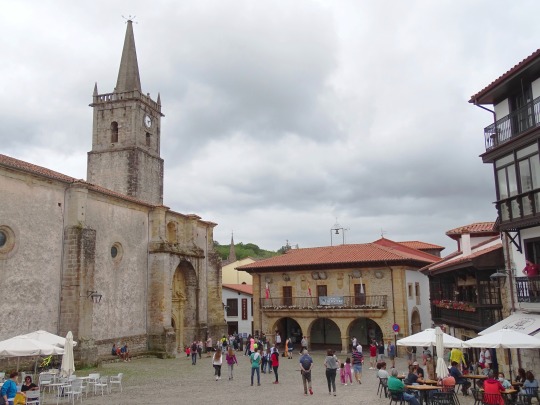
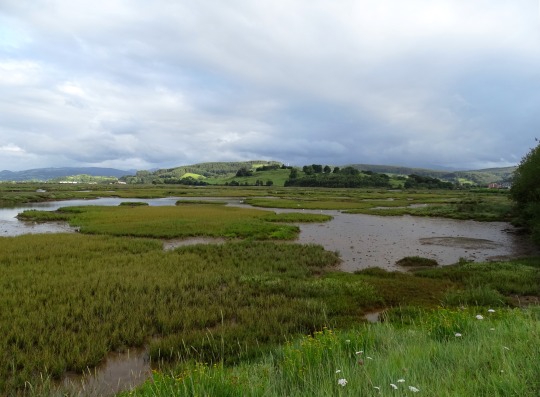



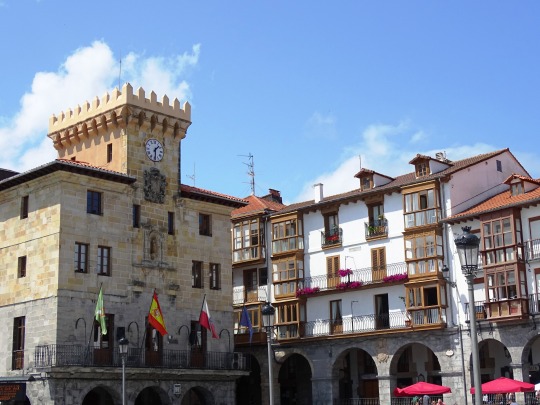
The Day of Cantabria
The Day of Cantabria is an important holiday for the locals which is celebrated yearly on the second Sunday in August. This year it falls on August 13. This historic community is located in Northern Spain with a population of 580, 229. Its name comes from the Celtic word for ‘highlanders,’ referring to its mountainous terrain. Cantabria is home to many beautiful national parks and museums that display its rich and ancient history. Cantabria’s beautiful architecture is a mixture of arabesque, gothic, and renaissance, making it a great tourist destination for those who appreciate history. The locals celebrate this holiday to appreciate the rich history and culture of Cantabria.
History of The Day of Cantabria
Cantabria is an autonomous community in northern Spain. Though the borders of this region changed throughout the years and had long been occupied by neighboring countries, its people have been around for centuries. This region has archeological sites that go back to the Lower and Upper Paleolithic period. The Cave of Altamira is one of the most significant finds, with cave paintings that date back to about 37,000 B.C. Cantabria is part of Green Spain and enjoys luscious forests, breathtaking scenery, and marvelous architecture.
During the Roman conquest of Hispania, Rome fought against Cantabria and Asturias from 29 to 19 B.C., eventually conquering the regions. The Cantabrians saw death in every battle as a victory and preferred committing suicide rather than becoming slaves. Cantabria remained part of the Roman Empire until it fell in 476 A.D. when it regained independence. It was later invaded by Muslim Moors in 714. Cantabria attempted to unify during the 18th century but struggled due to a lack of resources.
The Day of Cantabria was first celebrated in 1967 as The Day of the Mountains. Its name was later changed to “The Day of Cantabria” in 1981 when Cantabria gained independence. In 1981, the Statute of Autonomy of Cantabria allowed it to become a self-governed, autonomous community, giving it its own flag, coat of arms, and anthem. Cantabrians proudly celebrate this day through sporting events, parades, festivals, and traditional dance and music. Cantabrians all overexpress their appreciation for their history and culture, sharing it with others.
The Day of Cantabria timeline
37,000 B.C.First Cantabrians
The first recorded human evidence in this region.
195 B.C.Cantabria
The first references to Cantabria were documented by historians.
29 to 19 B.C.Cantabria Wars
Rome fights against Cantabria and Asturias.
19 B.C.Occupation
The Romans take over Cantabria.
476 A.D.Fall of the Roman Empire
The Roman Empire collapses.
1967The Day of the Mountains
Cantabria begins celebrating this holiday to appreciate the history and culture of Cantabria
1981Independence
Cantabria became an independent, autonomous community. The name of the holiday was changed to Day of Cantabria.
The Day of Cantabria FAQs
What is the capital of Cantabria?
The capital of Cantabria is Santander.
What is Cantabria known for?
Cantabria is known for its stunning nature, beautiful architecture, and rich history, such as ancient castles and caves with prehistoric paintings.
What language do they speak in Cantabria?
The official language in Cantabria is Spanish.
The Day of Cantabria Activities
Visit Cantabria
Host your own Cantabrian fiesta!
Read up on its history
Make Cantabria your next tourist destination and visit its many historical sites. If you happen to be around during the Day of Cantabria, join in on the many cultural festivities and performances.
You don’t have to go to Spain to celebrate this holiday. Host your own party with traditional food and music.
Spain has a long and rich history and Cantabria alone has so much to offer. Read up on the history and research some of its beautiful historical sites.
5 Interesting Facts About Spain
Spain has the world’s oldest restaurant
Spain had the first national anthem
Nudity is legal in most cities
It’s named after rabbits
It has a well-preserved heritage
The first restaurant ever, Sobrino de Bostín, in Madrid first opens.
Spain was the first country to officially declare a national anthem.
Most cities in Spain have no laws against nudity.
At around 300 B.C. Spain was called ‘Ispania’ meaning ‘land of rabbits’ due to the abundance of the woodland animal at the time.
Spain has 47 UNESCO World Heritage Sites, with only Italy and China exceeding it.
Why We Love The Day of Cantabria
It has a unique culture
It has a rich cuisine
It reminds us to preserve its culture
Cantabria is a very special place for those who enjoy the beautiful scenery and historical sites. By visiting Cantabria, you’ll enjoy its astonishing architecture and the many museums that replicate the awe-inspiring cave paintings that date back centuries.
Whether you want to visit the region or experience it from home, Cantabrians have many interesting foods, including many delicious deserts, like Quesada, or seafood dishes like bonito del Norte.
This holiday reminds us of all the beauty Cantabria has to offer and all the history that goes back to the stone age. It’s crucial to preserve all that history.
Source
#Castro Urdiales#Santoña Victoria and Joyel Marshes Natural Park#Asón River#Santillana del Mar#Northern Spain#Southern Europe#Comillas#Spain#Palacio de Sobrellano by Joan Martorell#España#The Day of Cantabria#travel#13 August 2023#second Sunday in August#DayofCantabria#Bay of Biscay#Cantabric coast#Cantabria#Cantabrian Sea#original photography#cityscape#seascape#architecture#tourist attraction#landmark#summer 2021
0 notes
Photo










Palace of Sobrellano, Comillas (No. 3)
The town was decorated in its accesses with welcoming arches that represented the different trades of the town. But without a doubt, one of the most spectacular events for that day was the arrangement throughout the town of 30 lanterns that should be illuminated with the arrival of the king. This fact determined that Comillas became the first Spanish town with electric light in its streets (less than a year ago Thomas Alva Edison had invented the incandescent lamp and were brought from his laboratories in Newcastle and Paris, the steam machinery that fed it was brought from Barcelona) and symbolically, capital of Spain for a day. Since Alfonso XII met the Council of Ministers in the Casa Ocejo during that summer in the town.
For this occasion, Alfonso XII was accompanied by his wife María Cristina, his sisters and his daughter. They stayed in the mansion-palace of Ocejo, whose interiors had been transformed to the taste of the time by several Catalan decorators and craftsmen. In the gardens, a smoking kiosk designed by a young Gaudí was installed, whose whereabouts are unknown. And this house was also the scene of the celebration on September 5 of a congress of ministers, for which Comillas had to become for a day the capital of Spain. In addition to the king himself, the then president of the Council, Sagasta and generals Pavia and Martínez Campos attended.
The other two great events in those days were the presentation to the King of the first Spanish ship with a steel hull and the inauguration of the Chapel-Pantheon.
Source: Wikipedia
#Palace of Sobrellano#Parque Municipal de Sobrellano#Palacio de Sobrellano#Chapel of the Pantheon of Sobrellano#neo-Gothic style#Joan Martorell#Spain#Comillas#San Vicente de la Barquera#Northern Spain#Southern Europe#travel#exterior#small town#architecture#cityscape#nature#flora#tree#vacation#summer 2022#original photography#Cantabria#España
5 notes
·
View notes
Photo


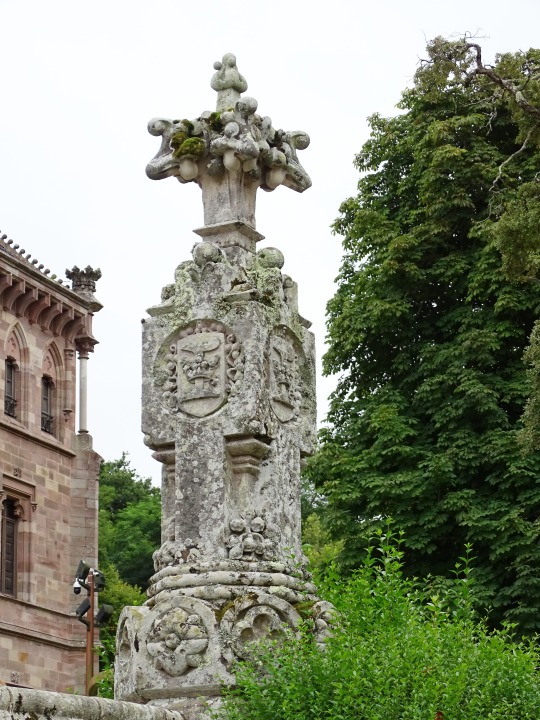
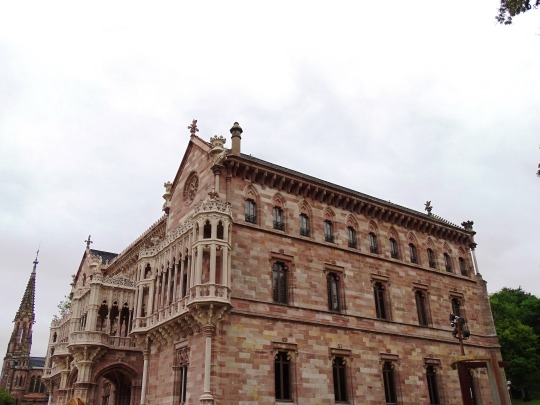






Palace of Sobrellano, Comillas (No. 2)
It was the first building in Spain to use electric light, since the first Marquis ordered it to be installed for one of the visits of Alfonso XII, although it was finally housed in the Casa Ocejo since the installation was not finished on time.12
Works such as this palace, Gaudí's Caprice, the Comillas Kiosk, the Pontifical University or the cemetery with its magnificent sculpture of The Exterminating Angel by Josep Llimona on the ruins of the old Gothic monastery made important Catalan modernist architects and artists of the moment leave their mark on this population.
Currently the palace is owned by the Government of Cantabria and is a museum, although it is also temporarily used as the headquarters of the Comillas Foundation courses until the rehabilitation of the major seminary of the building of the former Pontifical University is completed.
Source: Wikipedia
#Palace of Sobrellano#Municipal de Sobrellano Park#Palacio de Sobrellano#Chapel of the Pantheon of Sobrellano#Parque Municipal de Sobrellano#travel#Joan Martorell#Comillas#San Vicente de la Barquera#Cantabria#vacation#exterior#architecture#cityscape#original photography#summer 2021#landmark#tourist attraction#Northern Spain#España#Southern Europe#Spain
4 notes
·
View notes
Photo

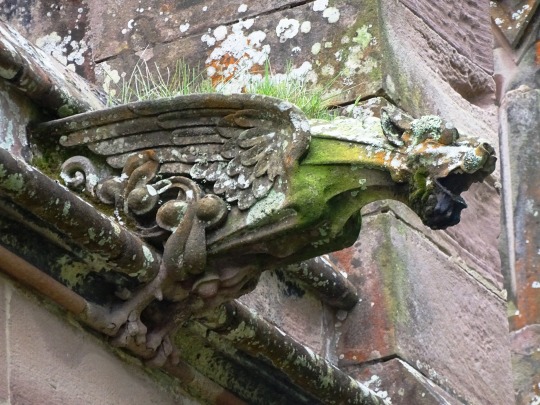



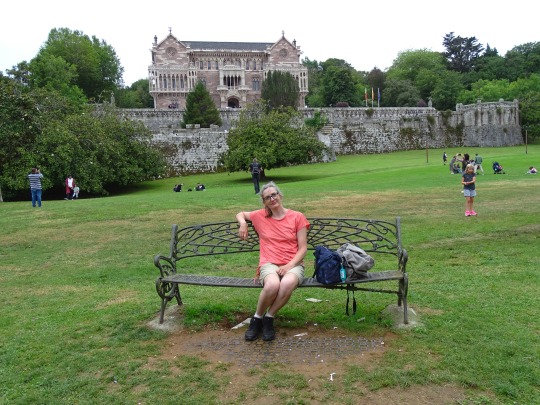
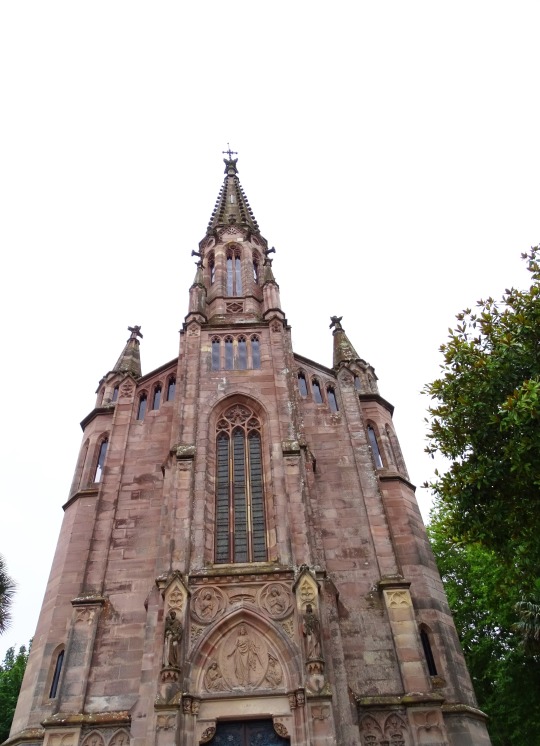
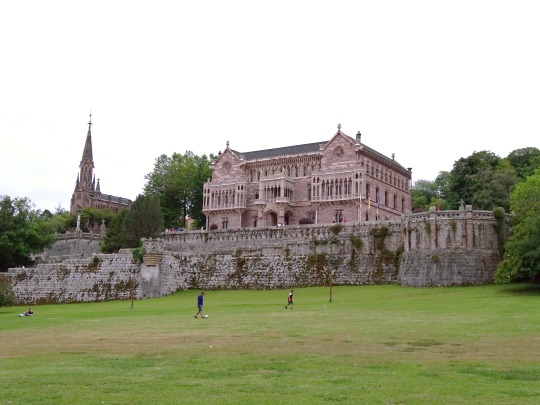
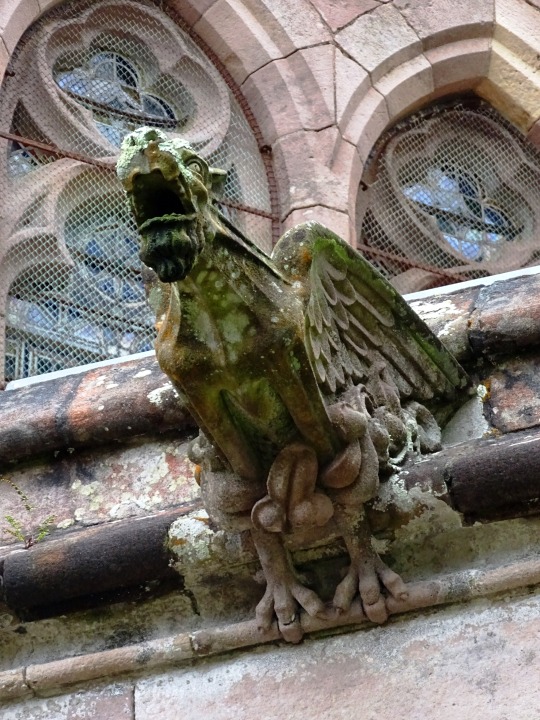

Chapel of the Pantheon of Sobrellano, Comillas (No. 2)
The Pantheon of D. Caludio Lopez Bru, the IInd Marquees de Comillas shows the exceptional reclining Christ of the sculptor Agapito Vallmitjana and the Pantheon of Antonio Lopez Lopez, Ist Marqués of Inverted commas, and his wife Maria Luisa Bru Lassus, shows a Venancio Vallmitjana’s relief, designed by Joan Martorell.
Between the interior ornamentation it emphasizes the altar realized by Francisco Paula Isaura y Fragas’ workshops. The light game provided by the windows polychromes against Eudald Ramon Amigo, stand out on the robust lateral walls of the chapel. The seats, the couches and the banks were designed by Antonio Gaudí.
Source
#Chapel of the Pantheon of Sobrellano#Municipal de Sobrellano Park#España#Parque Municipal de Sobrellano#Palacio de Sobrellano#Palace of Sobrellano#architecture#Joan Martorell#Perpendicular Gothic#exterior#summer 2021#travel#vacation#cityscape#palm tree#tourist attraction#landmark#Spain#Northern Spain#Southern Europe#Cantabria#San Vicente de la Barquera#flora#small town#door#gargoyles
2 notes
·
View notes
Photo



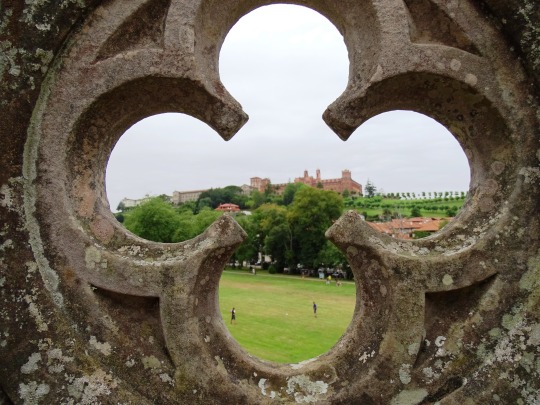






Palace of Sobrellano, Comillas (No. 4)
The king repeated his visit to the village the following year, on July 26, 1882. On this occasion he went alone, although on August 23 he was joined by his mother, Isabel II and the infantas Paz and Eulalia. The arrival of the queen meant for Comillas something similar to what happened the previous year. The reception is repeated with welcome arches, cannons, rockets and ringing of bells, upon arrival in Portillo. Isabel II and her daughters remain in the town until September 27, dedicating their time to baths on the beach (the so-called wave baths), visits to other locations, parties in Coteruca or in the house of Ocejo and even pilgrimages, such as the one celebrated on August 24 at the Veronica Cross. But one of the most special events was the celebration in the City Hall of various conferences with theoretical and experimental sessions on the applications of electricity, carried out by the best specialists of the time.
These royal visits will act as a magnet for wealthy bourgeois and aristocrats in their eagerness to be close to the court and will also be one of the triggers of the great transformation that will suffer a people, until then unknown to most of Spain, and that happens to become the place of rehearsal of Modernism, (with Antoni Gaudí and El Capricho or the University). The first golf course in Spain and the first telephone in Cantabria were also created.
The royal visits to the town will later happen with Alfonso XIII, who although he had fixed his summer residence in the Palace of La Magdalena, in Santander, frequented Comillas several summers.
Source: Wikipedia
#Chapel of the Pantheon of Sobrellano#Palace of Sobrellano#Palacio de Sobrellano#España#Comillas#Cantabria#architecture#Spain#Joan Martorell#neo-Gothic style#tree#flora#lawn#nature#landmark#cityscape#small town#Northern Spain#Southern Europe#summer 2021#original photography#exterior#tourist attraction#detail#San Vicente de la Barquera
3 notes
·
View notes